April 1, 2021
Grow a Bunch of Native Grasses & Sedges!
When I started gardening, “grass” was something your parents hoped you’d never smoke or that you had to mow on Saturdays. These days, we’re lucky to have a grassroots interest in growing native grasses that bring beauty and positive ecological impact to our gardens.
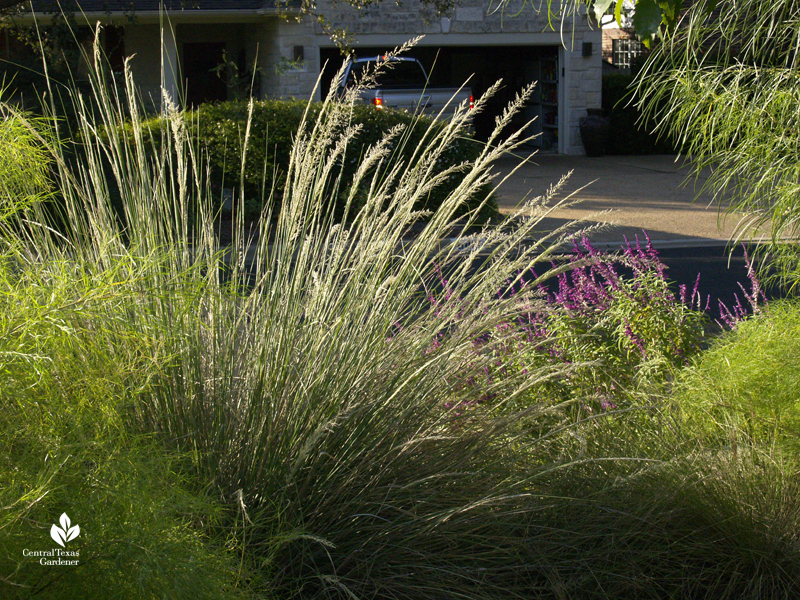
John Hart Asher, senior environmental designer with Ecosystem Design Group, broadens our garden perspectives with options for sun to shade, including sedges for that lawn look. Since 2019, he’s also CTG’s host, but this round, we’re on opposite sides of the webcam until we’re on the other side of the pandemic!

First, what’s the difference between clumping (bunch) grasses and lawn grass (turfgrass)? They’re both graminoids, distinguished by elongated stems (culms) with long, blade-like leaves. Lawn grasses spread for that carpet look through above ground stems (stolons) or by underground stems (rhizomes). Clumping or bunch grasses, like Lindheimer muhly, tend to stay put.
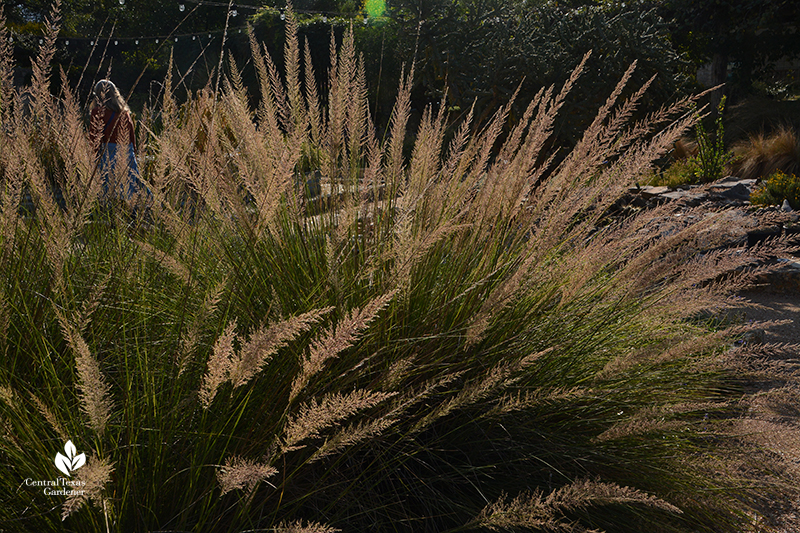
Some clumping grasses do spread by rhizomes, like my Texas bluegrass (Poa arachnifera), a cool season grass for part shade. A spring bloomer, it’s waving its 15” silky plumes these breezy days. It handles my clay soil and very limited summer watering regimen just fine.
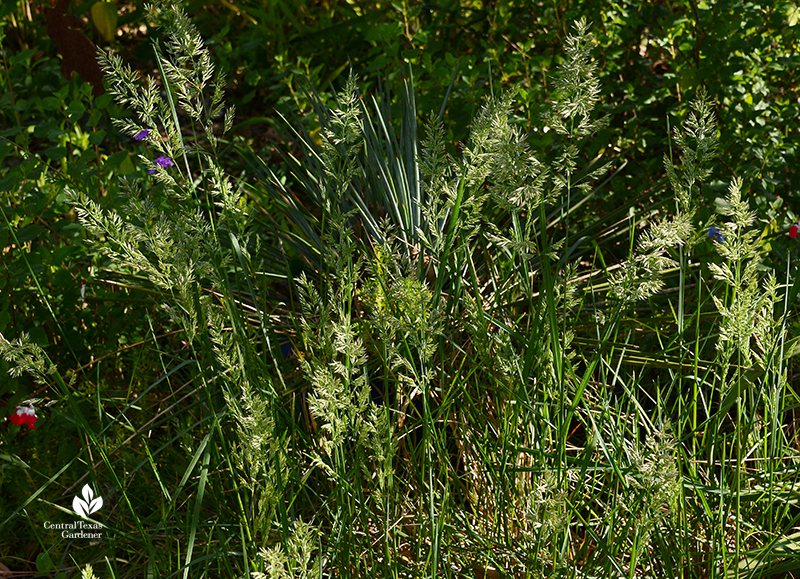
Sedges clump. Eventually, these drought-tough plants seed out, too, and with patience, will fill part shade for that lawn look.
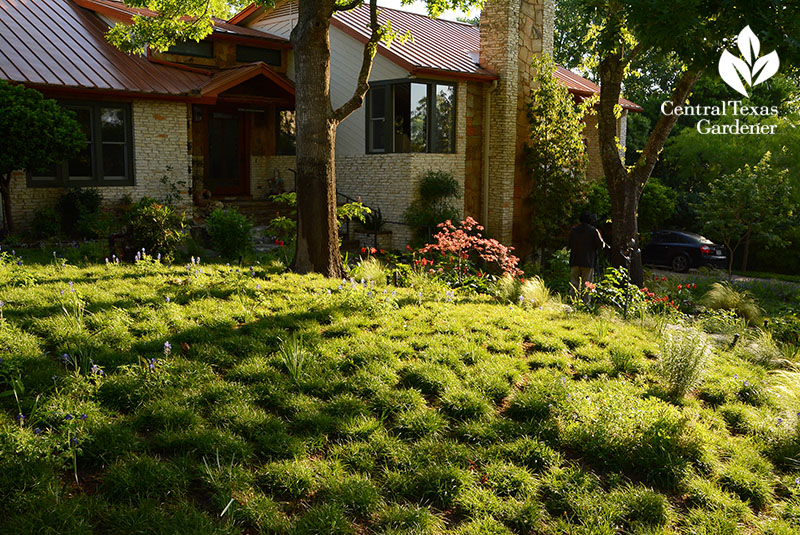
So, then, what’s the difference between sedges and grasses? Grasses are in the Poaceae family. Some are cool season, blooming in in spring. Others are warm season, flowering summer to fall. They can be annual or perennial and grow in sun or part shade. Stems are hollow and either round or flat. Lindheimer muhly is a warm season grass that you can easily find.
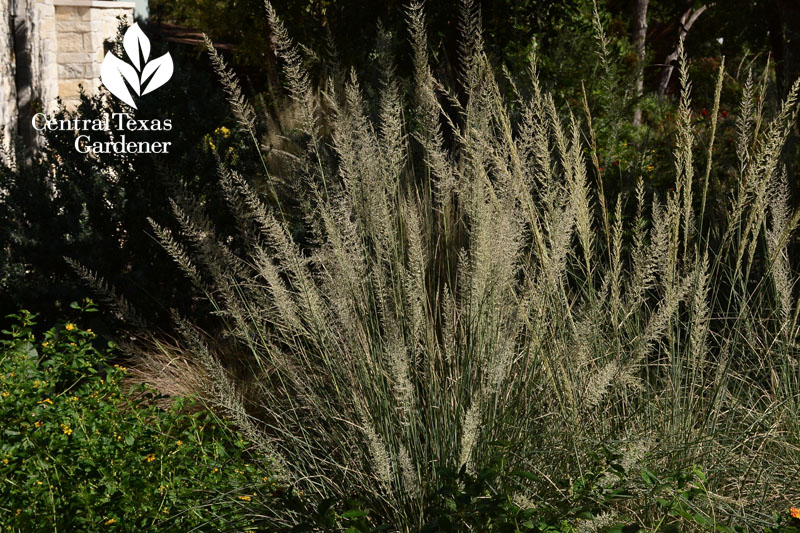
Sedges belong to the Cyperaceae family. They are perennial (but seed out), bloom in spring, and need part shade. Stems are solid and triangular. To quote John Hart, “Sedges have edges!”
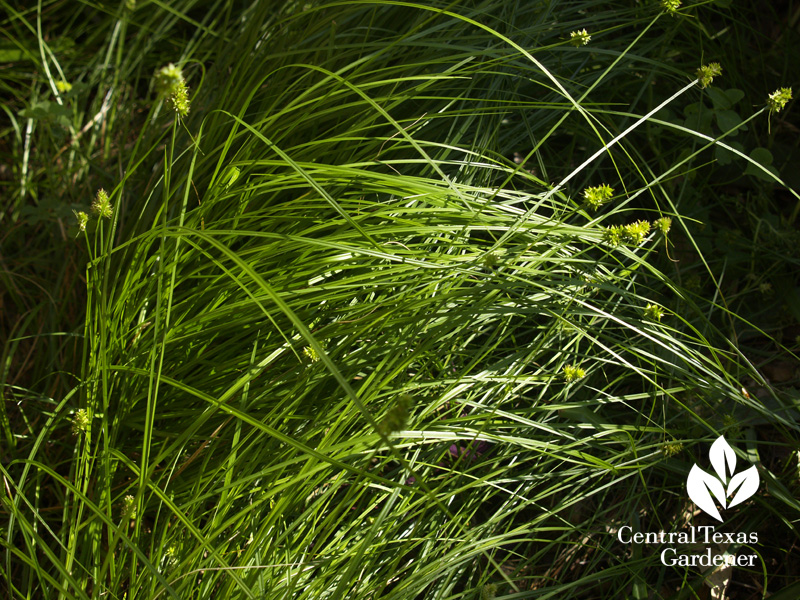
Use large grasses to create a visually powerful swath or hedge of sorts to define an area.
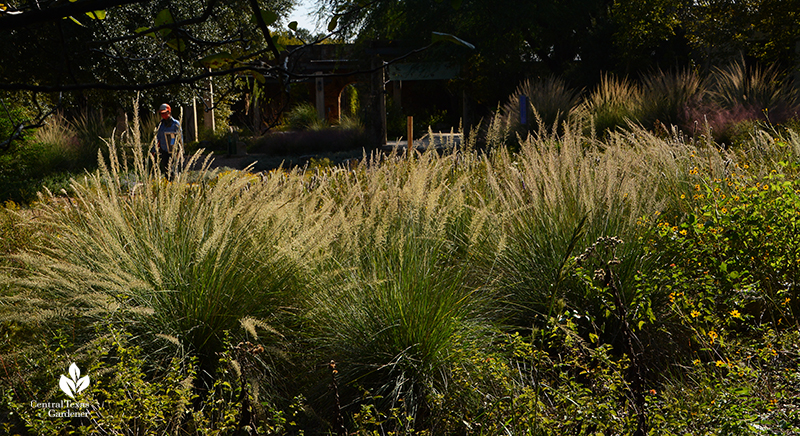
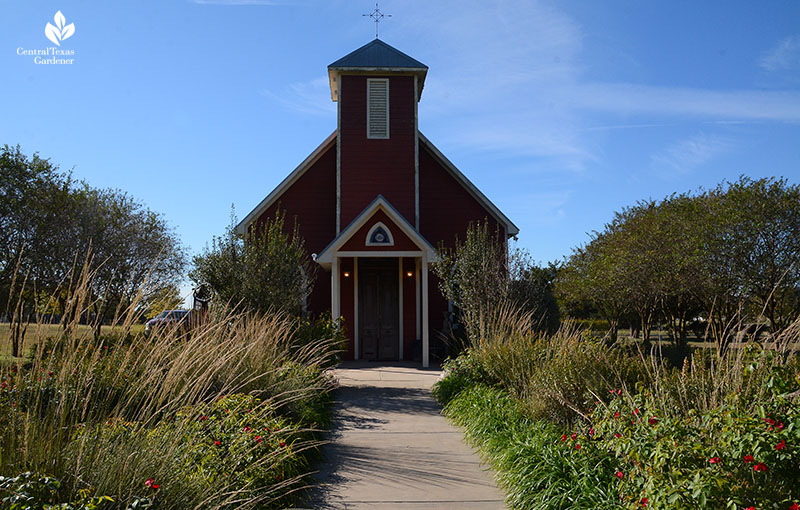
Fall’s when they take center stage. Here, bushy bluestem grabs foreground attention against supporting cast Lindheimer muhly.
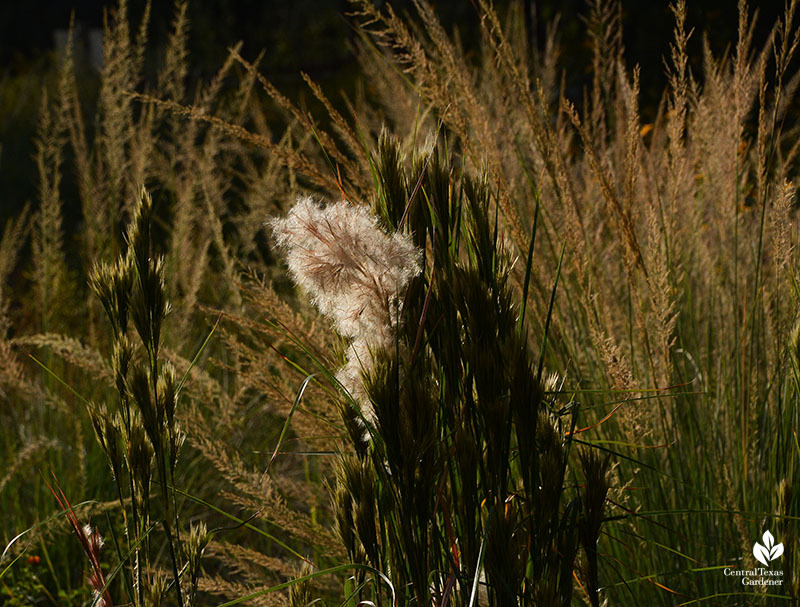
Any time of the year, accent your designs with contrasting foliar color, shape, texture, and height.
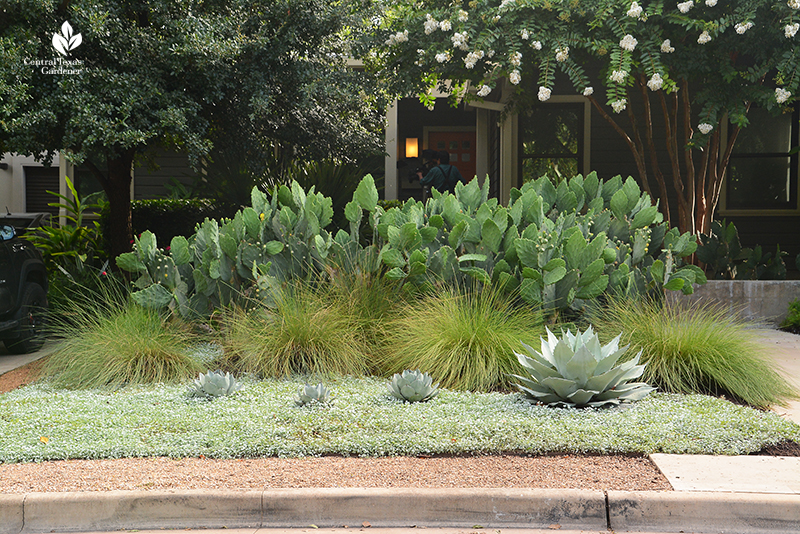
Shorter grasses replace lawn in pocket prairies, an option that John Hart and his wife Bonnie Evridge chose for their backyard makeover.
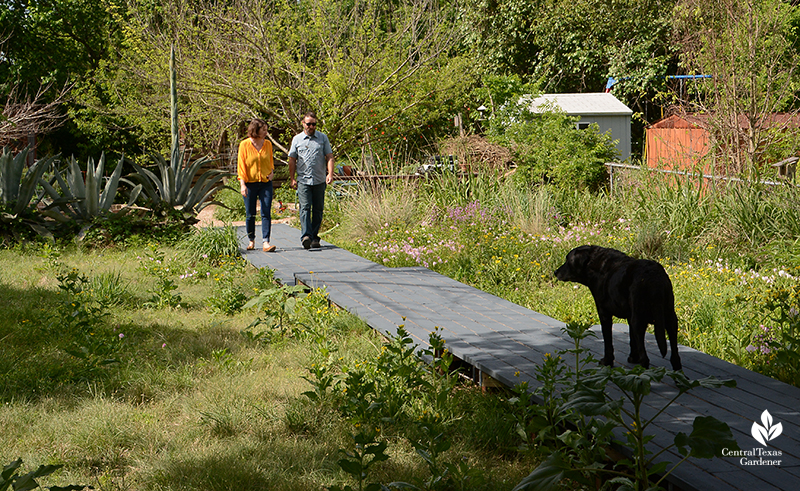
In winter, clumping grasses provide winter shelter for birds and butterflies. Birds pluck them in nesting season. Beneficial insects bore into larger stems to hunker down in cold weather to patrol our gardens later.
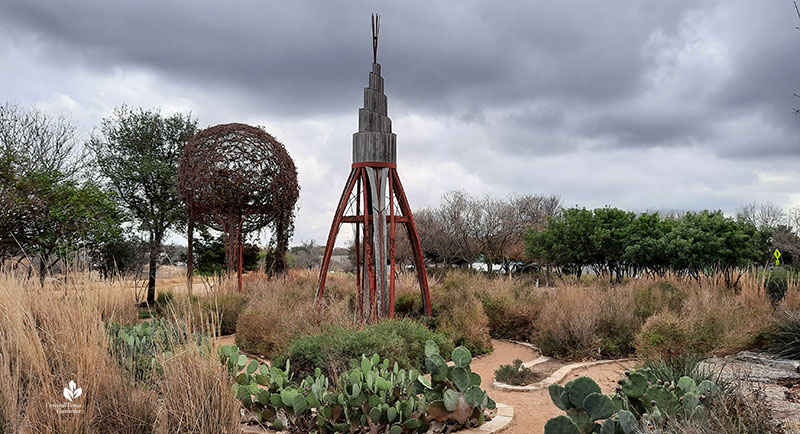
Their deep roots help control erosion. They sequester carbon, capturing and storing atmospheric carbon dioxide to reduce its amount in the atmosphere. In rain gardens—depressions in the soil that collect and infiltrate rainwater runoff—they accept drought to flood swings.
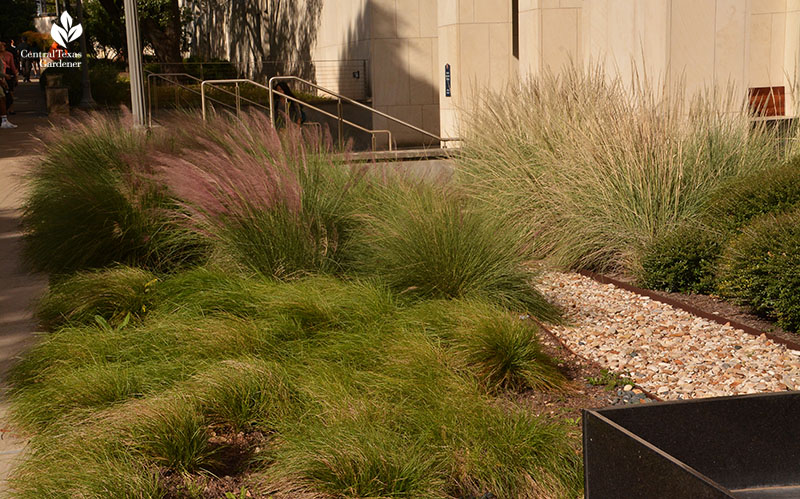
Spring’s a great time to plant from seed or container transplants. John Hart stepped us through the seeding process: loosen soil, add an inch of compost, spread the seed, and rake lightly. Don’t plant too deeply!
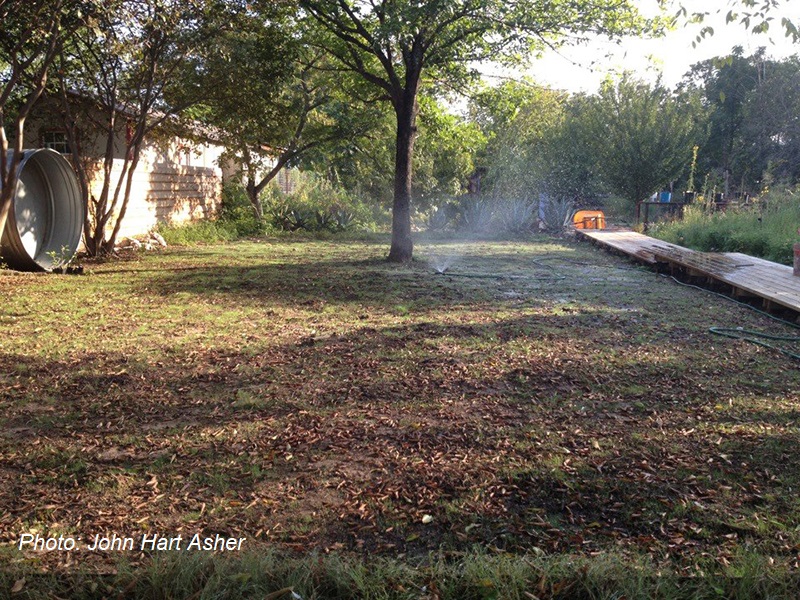
To establish grasses by seed
• First 10 days: keep moist
• Next 3 weeks: water every other day
• Net 2 weeks: twice a week
Some grasses are not available by seed, so if you choose transplants, water to establish. You may need to get transplants of little bluestem and big bluestem to inoculate the soil for spreading seeds later.
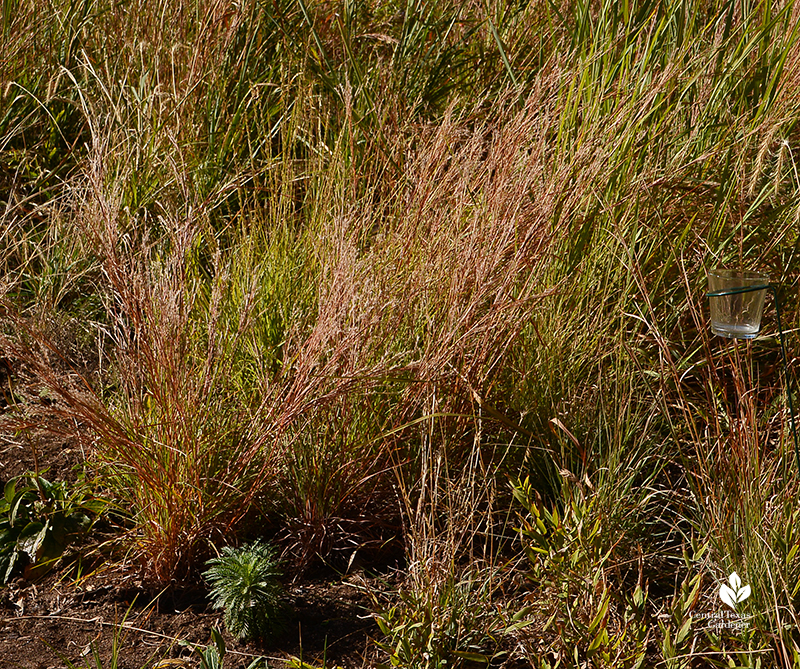
So, what can you plant? For shade, including dry shade, Texas bluegrass (Poa arachinifera) is a short, spring-blooming option that can handle some foot traffic.
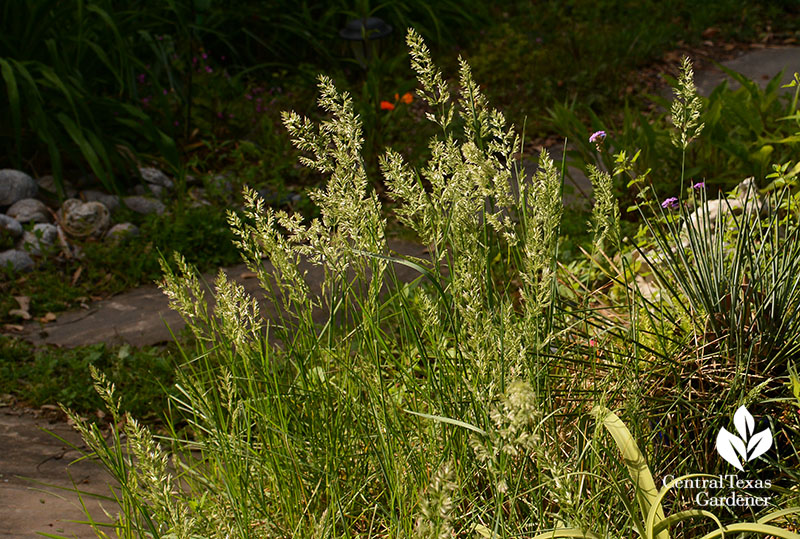
Inland sea oats is a great choice to fill a part shade spot (even accepting sun blasts) under trees or along shady fences. It does seed out, which in my garden I consider a bonus. A swath really stands out.
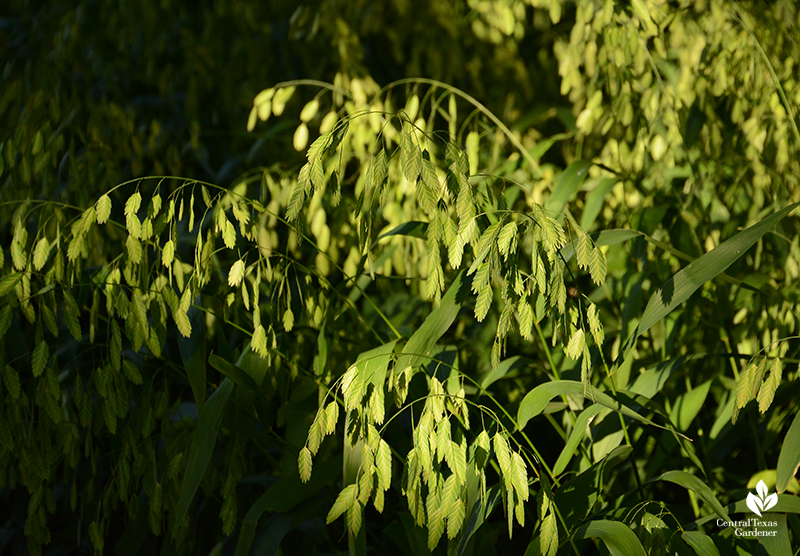
Its fall seed heads are simply gorgeous and very vase-worthy for indoor arrangements. Whack them down to the ground in late winter. You can also move unwanted seedlings to new areas or even containers.
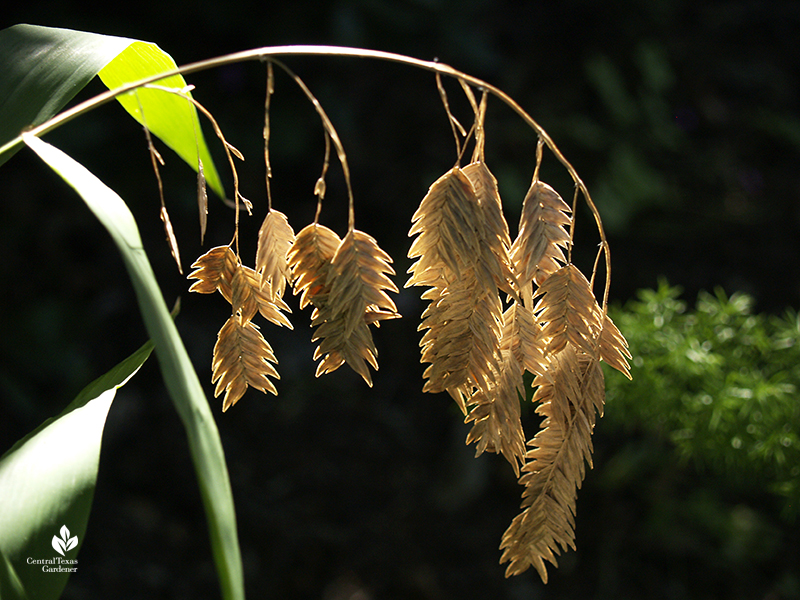
Texas wintergrass (Nassella leucotricha) is one I want to get this year! Thank you to horticulturist Adam Black for this gorgeous photo on his dappled shade property in Brazos County. A good friend of CTG, Adam’s now the program manager for Smithsonian’s The Global Genome Initiative.
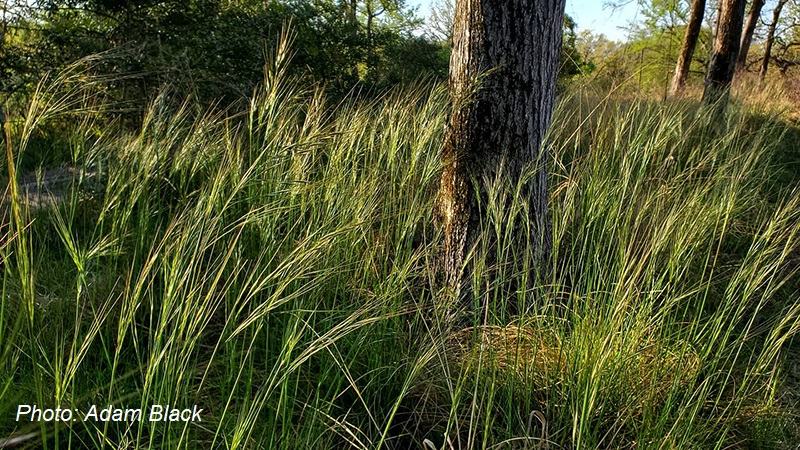
I’ve been adding transplants of Melic grass (Melica nitens) in my part shade areas thanks to Patrick Kirwin and Scott Ogden who showed me its beauty. It’s becoming more available (I also got a few more plugs from the Lady Bird Johnson Wildflower Center plant sale last fall). Here’s the Kirwin/Ogden established design.
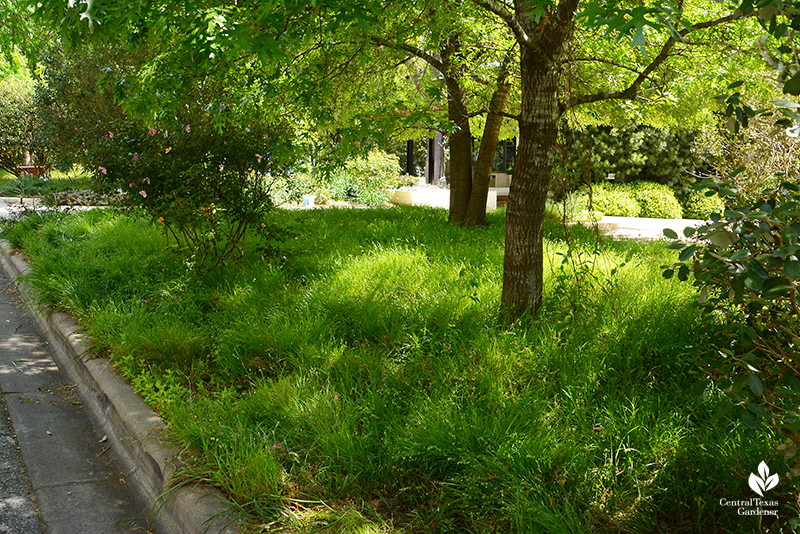
Patrick and Scott chose a sedge, Carex leavenworthii, for a wandering path through trees. Recently it’s been dubbed the “lawn sedge.”
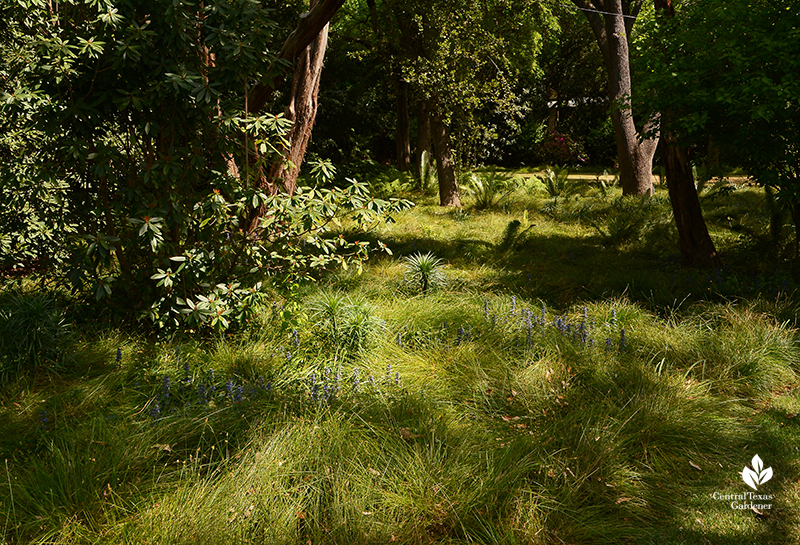
I’ve got Carex texensis. John Hart also recommends C. blanda and C. perdentata.
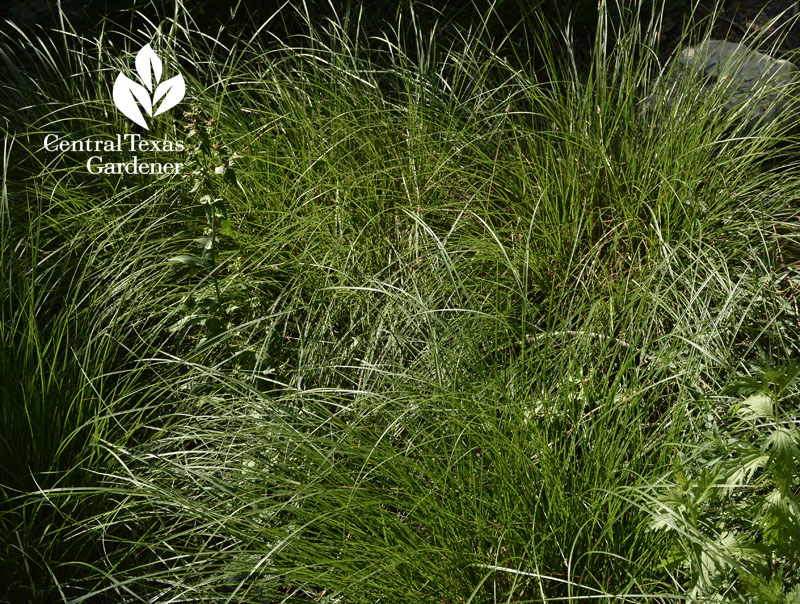
Admittedly, I get confused about the sedges, because names have changed over the years. In any case, they’re perfect for those part shade areas, including under live oak trees.
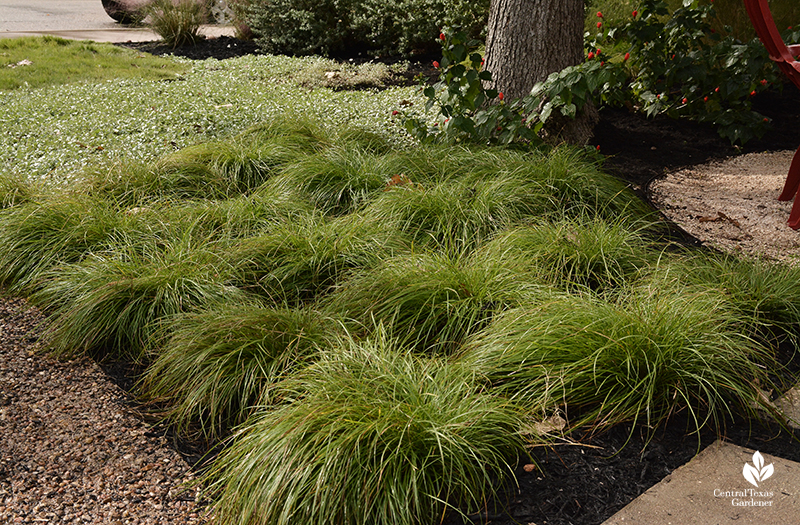
You’ve got lots of options for sun including big bluestem. Here’s two others, little bluestem and prairie wildrye.
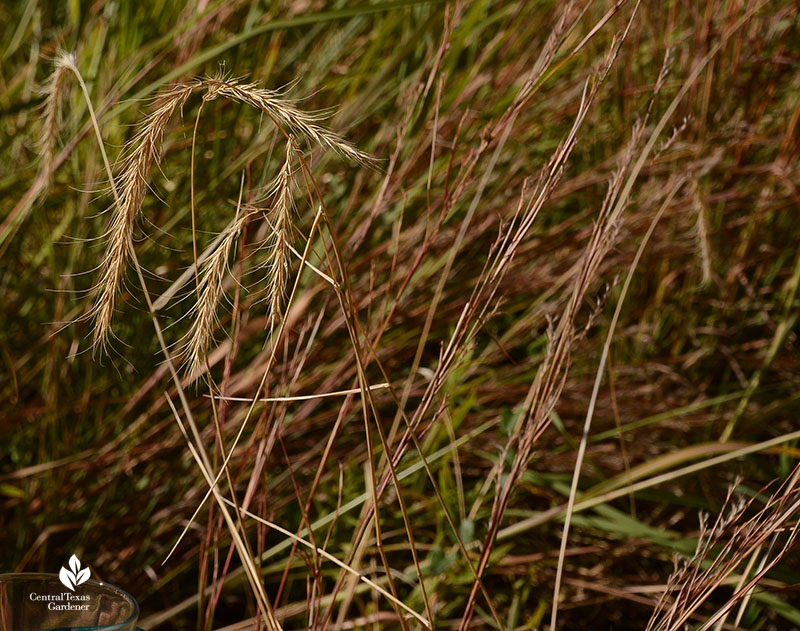
Along with Lindheimer muhly, there’s deer muhly, seep muhly, and burgundy-flowered gulf muhly (and lots of hybrids, when you can find them). Here’s Lindheimer and deer.
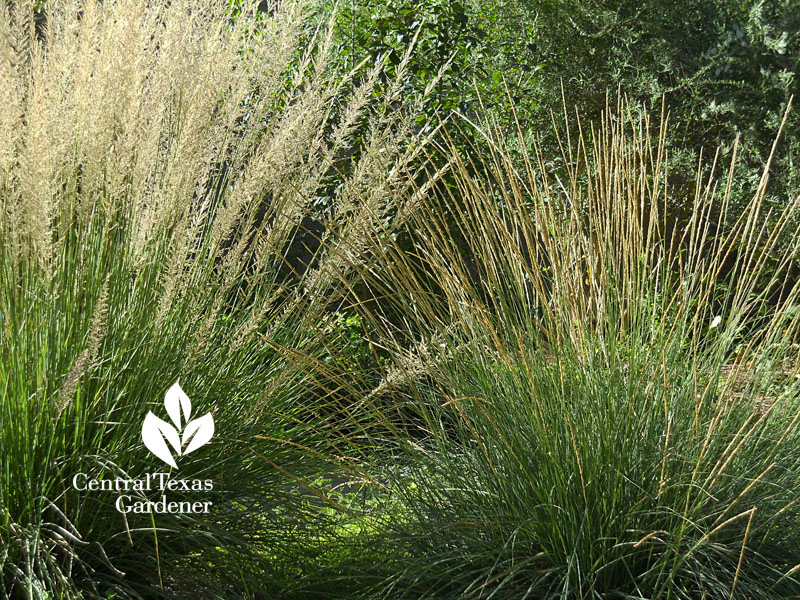
And burgundy-hued gulf muhly, also called gulf coast muhly.
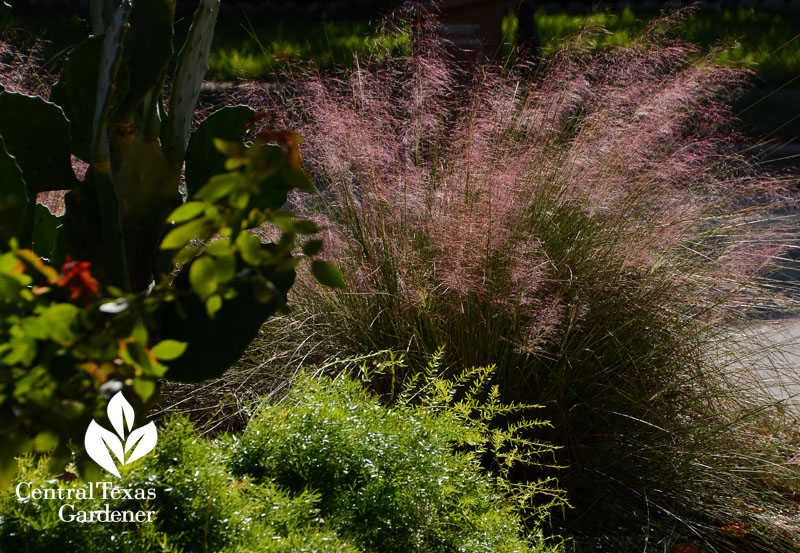
To shield a view or define a conversation cove, switchgrass grows to a hefty 8′ tall!
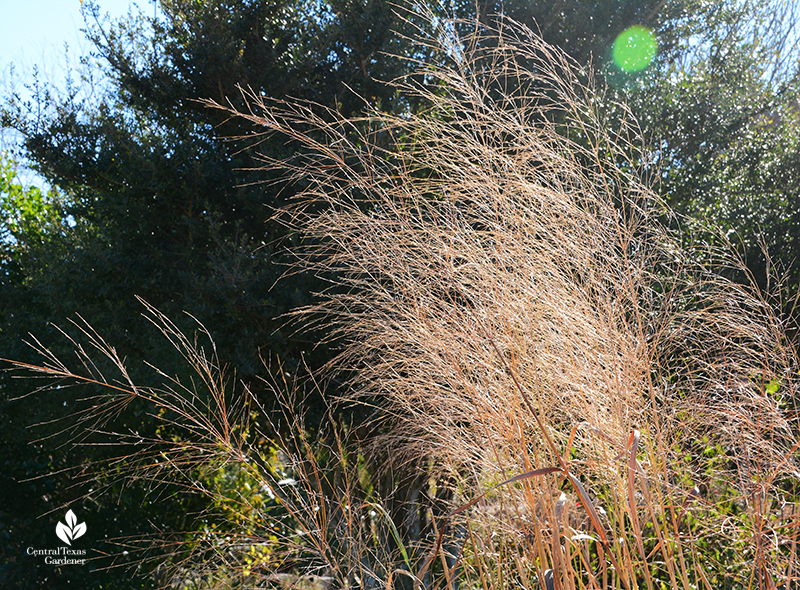
Medium grasses include sideoats grama, the state grass of Texas.
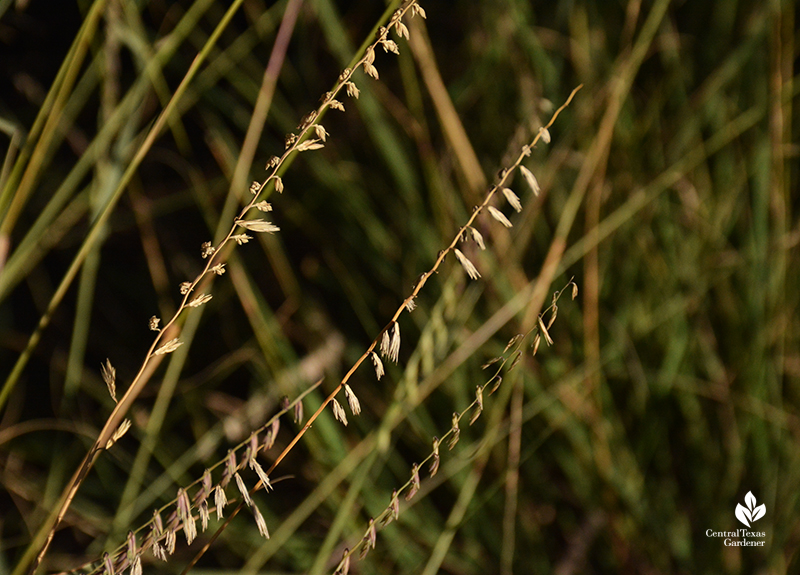
And Blue grama, including hybrid ‘Blonde Ambition.”
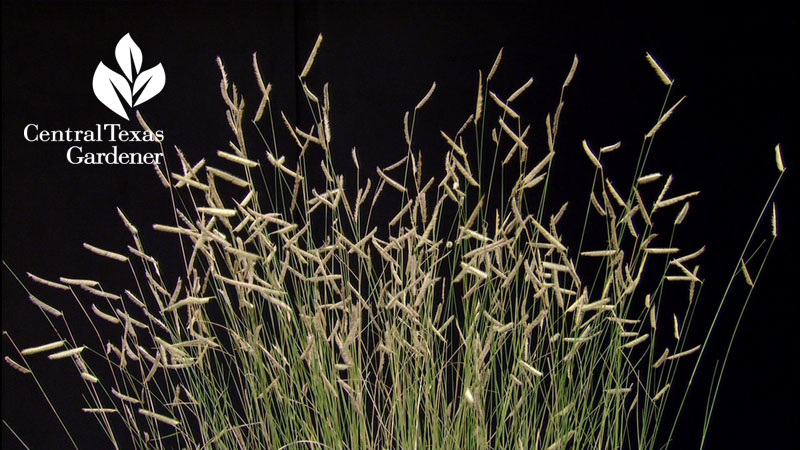
In John’s garden, he combines Habiturf with green sprangletop, sideoats grama, and purple threeawn.
Although the family’s youngsters and dogs can certainly romp in it, Habiturf can’t handle a lot of whomping. In play areas, John Hart just fills in with new plugs or seeds when needed.
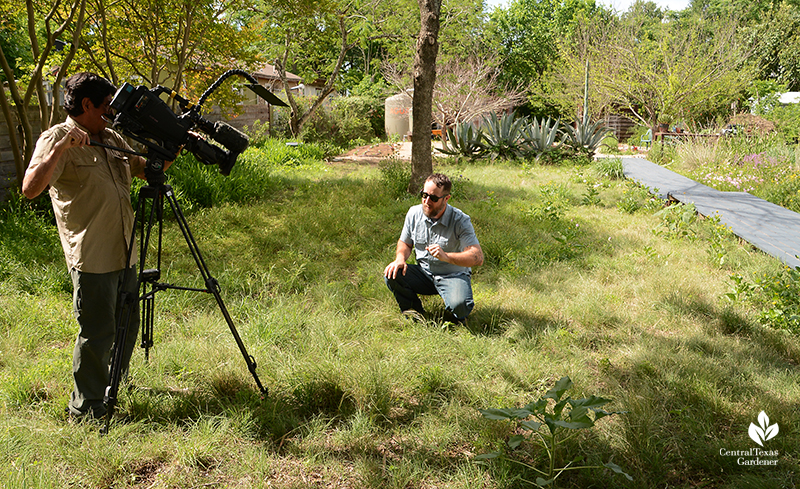
Habiturf, created by the Wildflower Center to replace lawn in sun, combines buffalo grass, blue grama, and curly mesquite. Get their tips to prep, plant, and establish.
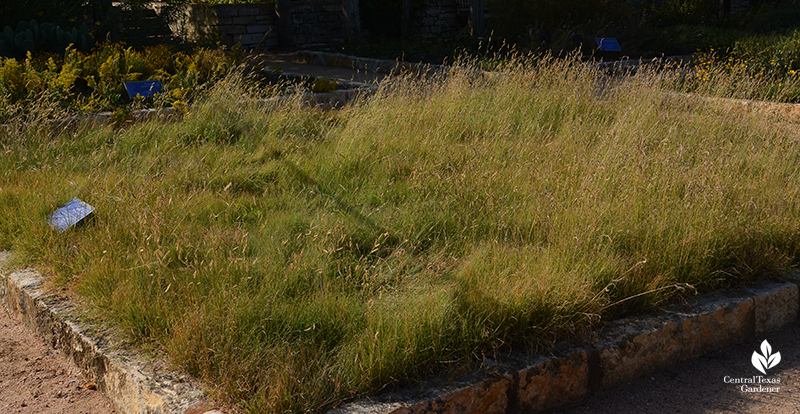
Habiturf Sources
Native American Seed (Thunder Turf)
Douglass King Seeds (Habiturf)
Find native grass transplants at the Lady Bird Johnson Wildflower Center’s Spring Plant Sale April 1 – May 30.
Get all of John Hart’s tips and plant selections right now, including when to prune.
Thanks for stopping by! See you next week!

